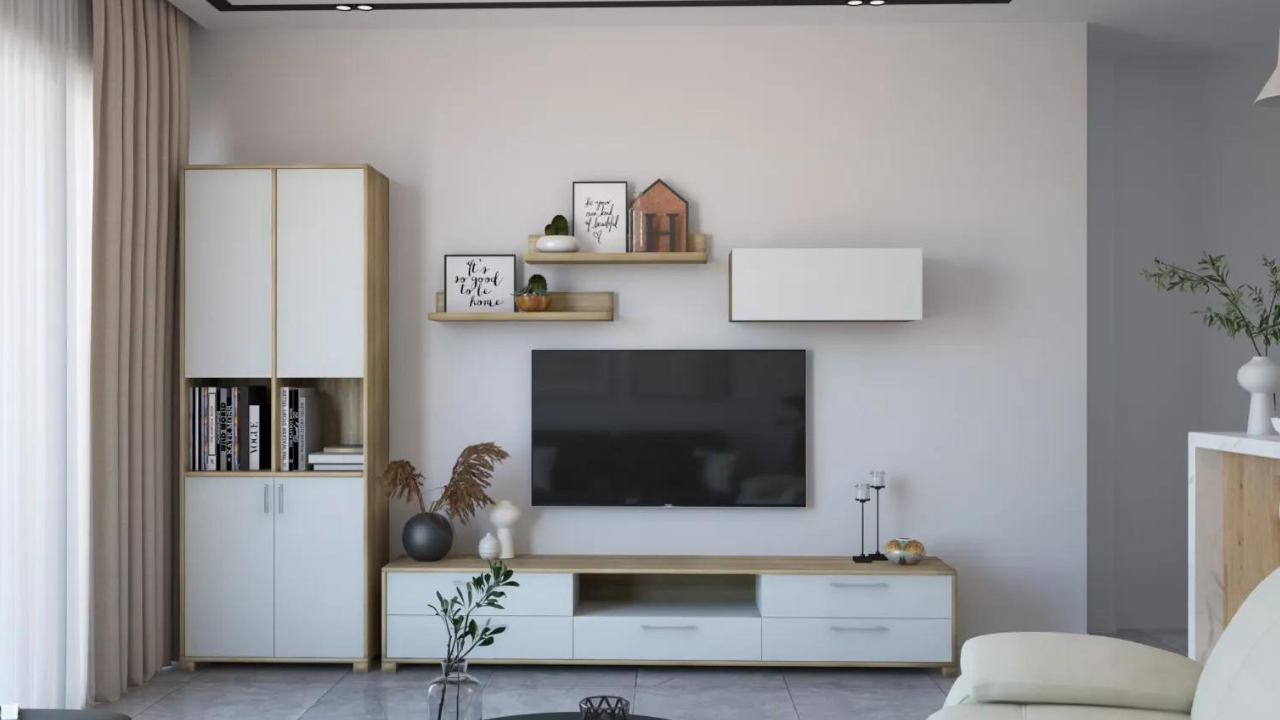
The living room is where we unwind after a long day, host impromptu movie nights, and share stories with loved ones. But how often do we pause and consider the state of our living room furniture? It is easy to grow accustomed to that sagging sofa or the coffee table that has seen better days.
However, like everything else, our furniture too has a lifespan. Recognising when it’s time for an upgrade can transform the look of your space and enhance your home’s comfort & functionality. In this blog, we will explore five signs indicating that it’s time to bid farewell to your living room setup and embrace a fresh aesthetic.
5 Signs That Point Towards Upgrading Your Living Room Furniture
Sign 1: Wear and Tear
- Sagging: This is a common issue, especially in sofas and armchairs. Over the years, the springs and cushioning in your seating lose their resilience, leading to a sunken appearance & feel. When your sofa no longer provides the support it once did, and you find yourself sinking uncomfortably deep, it’s a clear sign that it is time for a replacement.
- Creaking: Furniture that makes noise under stress, such as creaking or cracking sounds when sat upon, indicates weakened structural integrity. This is often found in older wooden furniture like chairs & tables, where the joints may have become loose or the wood may have weakened.
- Faded Colours & Frayed Fabrics: The visual appeal of your furniture plays a big role in the overall ambience of your living room. Fabrics that have faded due to exposure to sunlight or have become frayed look unsightly, and can be uncomfortable to use. Leather furniture, too, may show signs of ageing through discolouration or cracking.
Sign 2: Comfort and Support
- Understanding the Decline in Comfort: The primary role of your sofa or armchair is to offer a comfortable place to sit. The cushions on these pieces are designed to balance softness & support. However, the materials inside the cushions – such as foam or batting – begin to break down with constant use. This breakdown results in pillows that are too soft, offer little support, and lead to an uncomfortable seating experience.
- The Role of Springs and Frames: Beneath the cushions, the springs & frame of the furniture play a vital role in maintaining its structure & comfort. Meant to give a little bounce and support, springs can stretch out or break after repeated use. A weakened or damaged frame can also contribute to the discomfort, as it may no longer be able to hold the weight of the users adequately.
- Physical Implications: When your furniture no longer provides the necessary support, it can lead to physical discomfort. This is especially true for people who spend considerable time sitting, like those who work from home or enjoy long hours of television or reading. Poorly supported seating can cause strain on the back, neck, and hips – leading to discomfort, pain, and even long-term posture problems.
Sign 3: Outdated Styles
- The Evolution of Interior Design Trends: Interior design is a dynamic field with trends that are transient. For instance, the heavy, ornate furniture of the past has given way to more minimalist and sleek designs in recent years. Neutral tones and clean lines have replaced bold patterns & colours of the 70s and 80s. Furniture that carries the hallmark of a bygone era – like floral upholstered sofas, bulky entertainment units, or overly carved wooden pieces – can anchor your space in the past.
- Choosing Timeless Pieces: To ensure your living room doesn’t fall victim to rapid changes in style, opt for timeless pieces. Typically, such furniture has clean lines & neutral colours, and is made of high-quality materials that age well. When selecting new pieces, consider their versatility and how they might blend with different accessories or in various settings. This approach allows for more accessible updates to your space without replacing large furniture items.
- Balancing Trends and Timelessness: While keeping up with the trends, it is essential not to be swayed by every fad. Striking a balance between trendy and timeless pieces can keep your living room looking fresh yet enduring. Incorporate modern elements through smaller items like throw pillows, art, or decorative pieces, which can quickly & affordably be swapped out as trends change.
Sign 4: Changes in Lifestyle
- Adjusting to Family Additions: The arrival of children or pets brings new considerations for your living room furniture. Durability, safety, and ease of cleaning become paramount. For families with young children, look for furniture with rounded edges to prevent injuries. Fabrics should be easy to clean and resistant to stains; materials like microfibre or leather are excellent choices. If you have pets, opt for pet-friendly fabrics such as tightly woven textiles, that can withstand scratches and are easy to vacuum.
- Downsizing for Smaller Spaces: Maximising space becomes a priority if moving to a smaller home or apartment. Look for multifunctional furniture, like sofa beds or nesting tables, that can serve multiple purposes. Opt for pieces proportionate to your new space to avoid a cramped feeling. Wall-mounted shelves or floating cabinets can provide storage without taking up floor space.
- Choosing Furniture for Larger Spaces: Conversely, moving to a larger space allows for more flexibility. Consider larger sectional sofas for ample seating or statement pieces like an accent chair or an oversized coffee table, to fill the space appropriately and create focal points.
- Adapting to Lifestyle Changes: Regardless of the specific change, it is important to choose furniture that aligns with your current lifestyle needs. This might mean trading that ornate coffee table for a sturdier, more functional piece or replacing a beloved but impractical loveseat with a comfortable sofa.
Sign 5: Difficulty in Cleaning and Maintenance
- Challenges with Older Furniture: Older furniture may have fabric that is more susceptible to stains and wear. Over time, these fabrics can absorb spills and odours, making them difficult to clean. Additionally, the intricate designs and textures that are standard in older pieces can trap dust and allergens, requiring frequent meticulous cleaning. The wear & tear on older furniture can lead to frayed edges and weakened surfaces, which can further deteriorate during the cleaning process.
- Advancements in Modern Furniture: Contemporary furniture is often designed with maintenance challenges in mind. Many modern pieces come with easy-to-clean fabrics and surfaces. For example, some sofas & chairs are now made with stain-resistant fabrics or have removable covers that can be machine-washed. Similarly, modern wood furniture often has a protective finish that makes dusting easier and prevents stains.
- Benefits of Easy-to-Clean Furniture: Investing in furniture with easy-to-clean materials can significantly reduce the time & effort required for upkeep. This mainly benefits busy households, homes with children or pets, or those who prefer a minimal lifestyle. Furniture that is easy to clean not only maintains its aesthetic appeal for a longer period, but also promotes a healthier living space by minimising the accumulation of dust and allergens.
- Selecting the Right Materials: When shopping for new furniture, consider materials like leather or microfibre for upholstery, which are easier to wipe down and less prone to staining. For wood furniture, look for pieces with a durable finish. Additionally, tables with fewer nooks & crannies can simplify the cleaning process.
- Sustainability and Maintenance: As you consider upgrading your furniture, sustainability is also worth noting. Furniture designed for ease of cleaning and maintenance often enjoys an extended lifespan, lessening the frequency of replacements. This characteristic makes it a more environmentally sustainable choice over the long term.
Conclusion
As we wrap up our journey, it is evident that our furniture is not just a backdrop to our lives but a central component of our daily comfort, functionality, and aesthetic pleasure. The visible wear & tear that tells a story of the years gone by, the comfort & support that once cradled us during movie nights, outdated styles that no longer reflect our taste, the uphill battle with cleaning & maintenance – each of these signs is a call to reevaluate and rejuvenate our living rooms.







